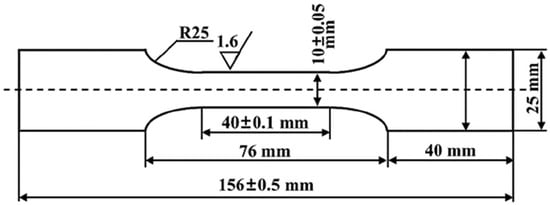4. Discussion
The experimental steels are typical martensitic steels. To reveal the strengthening mechanism of Ti and Nb elements, the yield strength is determined by considering the four primary strengthening components: fine grain strengthening, precipitation strengthening, dislocation strengthening, and solid solution strengthening. However, the strengthening components are somewhat interrelated rather than independent of each other. When the strength of the steel is relatively low, there is a reduction in the interaction between the strengthening components, and they can be linearly superimposed. When the strength of the steel is high enough, the interaction effect of the strengthening components cannot be ignored. In this case, a root-mean-square superposition is utilized to perform the requisite calculations, as illustrated in Equation (1) [
24].
where is Peierls–Nabarro force, which is taken as 39 MPa in this paper; is the solid solution strengthening component; is the dislocation strengthening component; is the fine grain strengthening component; is the second phase precipitation strengthening component; and the strengthening unit of lath martensite is the lath block.
The solid solution strengthening component can be calculated by the following Equation (2) [
25]:
where [C] represents the mass percentage of strong solid solution strengthening element C dissolved in the matrix, while kc is a constant with a value of 1722.5 [26]. The carbon content of the TiNb-steel is greater than 0.20 wt.%. When the carbon content is greater than 0.20 wt.%, about 0.20 wt.% carbon element would segregate in the dislocations. Consequently, 0.20 wt.% of carbon should be deducted from the calculation of carbon solid solution strengthening. Moreover, the carbon element in carbides should be subtracted. [M] denotes the mass percentage of weakly solid solution-strengthened elements; kM denotes the scale factor, where the values of Si, Mo, and Mn elements are 83, 11, and 37, respectively [27]. Thus, the solid solution-strengthening fractions were determined to be 866 MPa and 832 MPa for the Ti-steel and the TiNb-steel, respectively.
The dislocation strengthening component can be calculated by the following Equation (3) [
28]:
where α is a constant related to the crystal structure with a value of 0.3; G is the shear modulus with a value of 81 GPa;
is the Burgers vector with a value of 0.248 nm [
28]; and
is the dislocation density determined by XRD spectra. Thus, the dislocation strengthening components of the Ti-steel and the TiNb-steel were calculated to be 751 MPa and 788 MPa, respectively.
The fine grain strengthening fraction can be calculated by the Hall–Petch Equation (4) [
29,
30]:
where
is a scaling factor of 6.47 MPa·mm
1/2; d is the size of the martensitic block. Thus, the fine grain strengthening fractions for the Ti-steel and the TiNb-steel were calculated to be 204 MPa and 220 MPa, respectively.
The precipitation strengthening of steels depends on the size, composition, and quantity density of the second phase particles that are diffusely precipitated from the supersaturated solid solution, which are mainly utilized to strengthen steels by hindering the motion of dislocations. In this work, there are two types of particles that contribute to precipitation strengthening, i.e., ε-carbides and MC-type carbides. The precipitation strengthening fraction can be calculated by the following Equation (5) [
25]:
where is the precipitation strengthening increment of ε-carbide and is the precipitation strengthening increment of MC-type carbides.
The precipitation strengthening increment of ε-carbide can be calculated by the following Equation (6) [
31]:
where L is the size of the planar intercept of the ε-carbides (length S, width W), while D is the spacing of the ε-carbides, as calculated in Table 5.
L can be calculated by the following Equation (7) [
29]:
where is the average width or length of ε-carbides; is the standard deviation of the width or length of ε-carbides, and the calculation results are presented in Table 5.
Assuming that the spacing of ε-carbides in both length and width is D, D can be calculated by the following Equation (8) [
29]:
where f is the volume percentage of ε-carbides, which can be obtained statistically from TEM photographs of ε-carbides, and the values are calculated to be 1.76% and 1.51% for the Ti-steel and the TiNb-steel, respectively.
The precipitation strengthening increment of MC-type carbides can be calculated by the following Equation (9) [
32]:
where d is the particle size of MC-type carbides; is the volume fraction of MC-type carbides. can be calculated from the results of the physicochemical analysis by the following Equation (10) [32]:
where is the density of iron, which is 7.875 g/cm3; is the density of MC-type carbides; is the mass fraction of MC-type carbides. The physicochemical phase analysis indicates that the average chemical formula of the Ti-steel is (Ti0.54Mo0.46)C, and that of the TiNb-steel is (Nb0.12Ti0.50Mo0.38)C. Their densities were calculated using the weighted average density of the precipitates [33], which were NbC (7.82 g/cm3), TiC (4.93 g/cm3), and MoC (8.4 g/cm3). The calculated densities of the MC-type carbides were 6.54 g/cm3 and 6.6 g/cm3, respectively. The strengthening fractions were determined to be 250 MPa for the Ti-steel and 322 MPa for the TiNb-steel. The total precipitation strengthening could be calculated by Equation (5), and the results were 414 MPa and 472 MPa, respectively.
Based on the above-calculated strengthening components and Equation (1), the yield strength values of the Ti-steel and the TiNb-steel can be calculated as 1790 MPa and 1815 MPa, respectively, as shown in
Table 6. The calculated results are comparable to those measured ones with 40 MPa and 14 MPa positive deviations, respectively, which might be ascribed to the accuracy of measurements and the nonuniformity of the materials, indicating the relative effectiveness of the calculation. It is obvious that the strengthening of both the Ti-steel and the TiNb-steel are dominated by solid solution, dislocation, and precipitation strengthening. The higher yield strength of the TiNb-steel compared to the Ti-steel can be attributed to the presence of its higher levels of fine grain, dislocation, and precipitation strengthening effects, which can be attributed to the addition of the Nb element, leading to more MC-type carbide precipitates.
A number of mechanical parameters that are intrinsic to the material can be obtained from the uniaxial tensile stress (σ) strain (ε) curve. The true stress (
S) and true strain (
e) can be calculated by the following Equations (11) and (12), respectively [
34]:
The true stress and true strain for the Ti-steel and the TiNb-steel are illustrated in
Figure 9. It can be observed that at the same true strain, the TiNb-steel exhibits a higher true stress than the Ti-steel.
In the uniform plastic deformation stage, the true stress (S) and the true strain (e) of the TiNb-steel conform to the following Zener–Hollomon Equation (13):
In the equation,
n is the strain hardening index between the conditional yield point and the maximum uniform strain point, and
K is the strain hardening coefficient [
34]. At the stage of uniform plastic deformation, the true stress and true strain were taken as natural logarithms, respectively, and the strain hardening coefficient K and strain hardening index n were obtained by linear regression. The fitting results are presented in
Table 7. It can be noticed that the TiNb-steel possesses a higher hardening coefficient K and strain hardening index n than the Ti-steel. This is associated with the higher quantity of MC-type carbides present in the TiNb-steel as the MC-type carbides have been reported to enhance the coefficient of variation hardening K and the strain hardening index n of steels [
35,
36]. Consequently, the tensile strength of the TiNb-steel is observed to exceed that of the Ti-steel.
Based on the above analysis, the addition of Nb to the ultra-high-strength steel leads to a higher yield strength and tensile strength, which could be attributed to the effect of more carbide precipitation, causing the results of grain refining and more dislocation. Compared to the Ti-steel, the TiNb-steel shows higher mechanical properties, providing a new method to develop ultra-high-strength steels.



